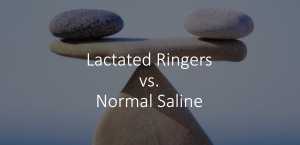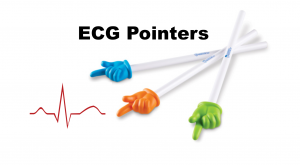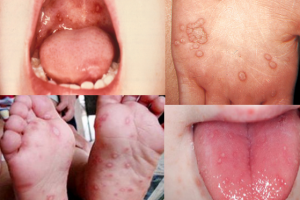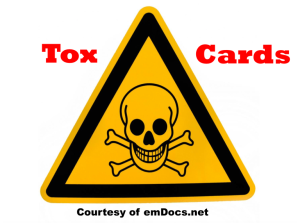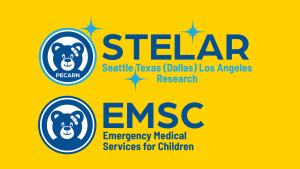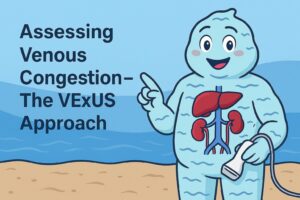Today on the emDOCs cast, we have a special guest, Alexis Koda, core faculty at the Nazareth Emergency Medicine Residency program in Philadelphia, PA. Alexis takes us through marine envenomations and trauma.
Episode 91: Marine Envenomation and Trauma
Major Marine Trauma
Shark Bites
- Tend to be neurovascular injury and tissue loss
- Death from hemorrhage
- Don’t chew—result in tearing injuries
Treatment of Major Marine Trauma
- Remove from water
- Control bleeding
- Supportive management
- Radiographs for foreign body, fracture, or bony involvement
- Consider culture
- Do not suture!!
- Possible early antibiotic treatment
Minor Marine Trauma
- Mechanism: Bites, Stings, Nematocysts
- Envenomation Presentation:
- All can cause localized pain, erythema, and warmth
- Dermatologic: Urticaria, burning, pruritus, localized paresthesia.
- Sponges and hydrozoa—bullae and blistering
- GI: nausea and vomiting
- Neurologic- paresthesia, paralysis, mental status changes, headache, vertigo/ataxia, seizures, weakness
- Cardiovascular: hypotension, syncope, respiratory distress/dyspnea, arrhythmia
- Constitutional: chills, muscle cramps, sweating, and diaphoresis
- Echinoderms—(starfish, sea cucumbers, and sea urchins)
- Starfish
- Mechanism of injury: surface spines, tufts or pincers
- Presentation: localized dermatologic
- Sea Urchin
- Mechanism of injury: sharp venomous spines for sea urchins
- Presentation: synovitis if in joint, discoloration, bleeding over several hours
- Sea Cucumber:
- Mechanism of injury: spray/release toxin
- Presentation: contact dermatitis, corneal inflammation, and blindness
- Treatment: vinegar, proparacaine and saline irrigation
- Starfish
- Mollusks—(Octopus, Cone snail)
- Blue Ringed Octopus
- Mechanism of Injury: bite
- Toxin: Tetrodotoxin
- Presentation: respiratory arrest, localized puncture mark, vomiting, flaccid paralysis, perioral and intraoral paresthesia, diplopia, dysphagia, ataxia
- Recovery: 1-5 days
- Treatment: Supportive
- Cone Snail
- Mechanism of Injury: sting from disposable tooth fired at target
- Presentation: localized pain and numbness, variable spastic or flaccid paralysis, respiratory failure
- Treatment consideration: Avoid Na channel blockers
- Blue Ringed Octopus
- Annelids—(Bristleworms)
- Mechanism of Injury: Sting from chitinous spines
- Presentation: Reddened urticarial rash
- Porifera—(Sponges)
- Clinical Presentation: localized paresthesia, bullae and blisters, desquamation up to 2 months
- Cnidarians—(true jellyfish, hydroids i.e. Portuguese man of war, Cuboids i.e. box jellyfish, anemones)
- More envenomations than any other phylum
- Mechanism of injury: spring loaded venom gland called nematocyst that penetrates and injects prey
- Hydroids—Portuguese Man-o-war
- Presentation: “String of pearls”—linear erythematous eruption, local paresthesia, nausea, headache, chills, respiratory distress, drowning, death
- Special treatment considerations: vinegar may help
- Cubozoa
- Chironex fleckeri–box jellyfish
- Found Indo-pacific Ocean
- Presentation: Very severe pain and systemic toxicity
- Carukia Barnesi—Irujandji
- North Australia
- Cause catecholamine excess
- Presentation: Irukandji syndrome—hypertension, elevated troponin, tachycardia, agitation, sweating, impending sense of doom, piloerection
- Treatment: phentolamine, magnesium, nitroglycerin, nitroprusside, nicardipine
- Treatment: Box Jelly Antivenom
- Chironex fleckeri–box jellyfish
- Bony Fish—(Stonefish, Scorpionfish, Weeverfish, Lionfish )
- Stonefish—severe local pain with occasional systemic symptoms
- Scorpionfish—warm erythematous vesicles with intense pain
- Weeverfish- may develop necrosis
- Treatment: observe for 2 hours and antivenom for Stonefish
- Cartilaginous fish—rays & skates
- Mechanism of Injury: venomous spines in tail/sting; usually when stepped on
- Presentation: Intense local pain and occasionally systemic symptoms
- Snakes
- Mechanism of Injury: bite
- Presentation: GI symptoms, malaise, rhabdomyolysis and aki, ascending flaccid or spastic paralysis, ophthalmoplegia, ptosis, pupillary changes, respiratory failure, seizures and coma
- Treatment: Polyvalent sea snake antivenom, supportive management, treat anaphylaxis or serum sickness
Treatment of Minor Marine Trauma
Top 5 Do’s
- Use Heat and salty water
- Remove foreign bodies
- Provide pain relief like topical anesthetics
- Use Glucocorticoids and antihistamines
- Give antivenom if applicable
Top 5 Don’ts
- Avoid urine or Ammonia use
- Avoid ethanol
- Don’t use fresh water to remove nematocysts
- Avoid friction
- Depending on the species and your location avoid vinegar
References:
- Devlin JJ, Knoop KJ. Marine Trauma and Envenomation. In: Tintinalli JE, Ma O, Yealy DM, Meckler GD, Stapczynski J, Cline DM, Thomas SH. eds. Tintinalli’s Emergency Medicine: A Comprehensive Study Guide, 9e. McGraw Hill; 2020. Accessed August 25, 2022. https://accessemergencymedicine.mhmedical.com/content.aspx?bookid=2353§ionid=220746848
- Edward OJ. Venomous Marine Animals. In: Marx JA, Hockenberger RS, Biros MH, et al., eds. Rosen’s Emergency Medicine: Concepts and Clinical Practice (2 Volumes). Vol 1. Philadelphia: Elsevier Saunders; 2014:805-807.
- Dustin Taliaferro, Dustin, Cynthia Santos, MD, Alex Koyfman, MD, and Brit Long. (2020, September 26) EM@3AM: Marine Animal Bites and Stings. EmDocs. http://www.emdocs.net/em3am-marine-animal-bites-and-stings/
- Blohm E, Brush D. Marine Envenomations. In: Nelson LS, Howland M, Lewin NA, Smith SW, Goldfrank LR, Hoffman RS. eds. Goldfrank’s Toxicologic Emergencies, 11e. McGraw Hill; 2019. Accessed August 25, 2022. https://accessemergencymedicine.mhmedical.com/content.aspx?bookid=2569§ionid=210276679
- Fisher E, Chen A, Lei C. Disorders Caused by Venomous Snakebites and Marine Animal Exposures. In: Loscalzo J, Fauci A, Kasper D, Hauser S, Longo D, Jameson J. eds. Harrison’s Principles of Internal Medicine, 21e. McGraw Hill; 2022. Accessed August 25, 2022. https://accessmedicine.mhmedical.com/content.aspx?bookid=3095§ionid=264098518
- Zafren K, Thurman R, Jones ID. Stingray Envenomation. In: Knoop KJ, Stack LB, Storrow AB, Thurman R. eds. The Atlas of Emergency Medicine, 5e. McGraw Hill; 2021. Accessed August 25, 2022. https://accessemergencymedicine.mhmedical.com/content.aspx?bookid=2969§ionid=250461102
- Zafren K, Thurman R, Jones ID. Sea Urchin Envenomation. In: Knoop KJ, Stack LB, Storrow AB, Thurman R. eds. The Atlas of Emergency Medicine, 5e. McGraw Hill; 2021. Accessed August 25, 2022. https://accessemergencymedicine.mhmedical.com/content.aspx?bookid=2969§ionid=250461114
- Zafren K, Thurman R, Jones ID. Coelenterate Envenomation. In: Knoop KJ, Stack LB, Storrow AB, Thurman R. eds. The Atlas of Emergency Medicine, 5e. McGraw Hill; 2021. Accessed August 25, 2022. https://accessemergencymedicine.mhmedical.com/content.aspx?bookid=2969§ionid=250461126
- Zafren K, Thurman R, Jones ID. Marine Dermatitis. In: Knoop KJ, Stack LB, Storrow AB, Thurman R. eds. The Atlas of Emergency Medicine, 5e. McGraw Hill; 2021. Accessed August 25, 2022. https://accessemergencymedicine.mhmedical.com/content.aspx?bookid=2969§ionid=250461142
- Zafren K, Thurman R, Jones ID. Scorpionfish Sting. In: Knoop KJ, Stack LB, Storrow AB, Thurman R. eds. The Atlas of Emergency Medicine, 5e. McGraw Hill; 2021. Accessed August 25, 2022. https://accessemergencymedicine.mhmedical.com/content.aspx?bookid=2969§ionid=250461153
- Zafren K, Thurman R, Jones ID. Cone Snail Envenomation. In: Knoop KJ, Stack LB, Storrow AB, Thurman R. eds. The Atlas of Emergency Medicine, 5e. McGraw Hill; 2021. Accessed August 25, 2022. https://accessemergencymedicine.mhmedical.com/content.aspx?bookid=2969§ionid=250461163
- Zafren K, Thurman R, Jones ID. Sea Snake Envenomation. In: Knoop KJ, Stack LB, Storrow AB, Thurman R. eds. The Atlas of Emergency Medicine, 5e. McGraw Hill; 2021. Accessed August 25, 2022.https://accessemergencymedicine.mhmedical.com/content.aspx?bookid=2969§ionid=250460813
- Cheema N, Jurkiewicz C. 5-step approach to Marine Envenomations. https://www.emra.org/emresident/article/5-step-approach-to-marine-envenomations/. Published April 7, 2016. Accessed August 27, 2022.
- Atkinson PRT, Boyle A, Hartin D, McAuley D. Is hot water immersion an effective treatment for marine envenomation? Emergency Medicine Journal. 2006;23(7):503-508. doi:10.1136/emj.2005.028456
- Fil LJ, Tunik MG. Food Poisoning. In: Nelson LS, Howland M, Lewin NA, Smith SW, Goldfrank LR, Hoffman RS. eds. Goldfrank’s Toxicologic Emergencies, 11e. McGraw Hill; 2019. Accessed August 28, 2022. https://accessemergencymedicine.mhmedical.com/content.aspx?bookid=2569§ionid=210271206
- Yip K. TOXCard: Stingray injuries. emDOCs.net – Emergency Medicine Education. http://www.emdocs.net/toxcard-stingray-injuries/. Published December 30, 2018. Accessed August 28, 2022.
- Berling I, Isbister G. Marine envenomations. Australian Family Physician. 2015;44(1-2):28-32.
- Cegolon L, Heymann WC, Lange JH, Mastrangelo G. Jellyfish stings and their management: A Review. Marine Drugs. 2013;11(12):523-550. doi:10.3390/md11020523
- Montgomery L, Seys J, Mees J. To pee, or not to pee: A review on Envenomation and treatment in European jellyfish species. Marine Drugs. 2016;14(7):127. doi:10.3390/md14070127
- Perkins A, Morgan SS. Poisoning, Envenomation, and Trauma from Marine Creatures. American Family Physician. 2004;69:885-894.
- Wilcox CL, Yanagihara AA. Heated debates: Hot-water immersion or ice packs as first aid for cnidarian envenomations? Toxins. 2016;8(4):97. doi:10.3390/toxins8040097
- Remigante A, Costa R, Morabito R, La Spada G, Marino A, Dossena S. Impact of scyphozoan venoms on human health and current first aid options for Stings. Toxins. 2018;10(4):133. doi:10.3390/toxins10040133

